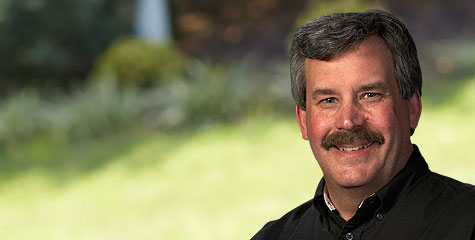
How Can I Implement Rotational Grazing?
Management : Cow & Calf
Nutrition : Supplements
Nutrition : Forage
In a rotational grazing system, cows enter a pasture, graze it down 2-3 inches, then move onto another pasture. Cows can return to grazed pastures once 8-9 inches of grass has grown back.
The type of grazing system you use often aligns with your environment. Dry, arid regions tend to use extensive systems with larger pastures or range areas. However, due to pasture size, the number of pastures is often limited. Intensive systems use smaller pastures or paddocks – and there are many to rotate between, making them more common in eastern, wet regions with rapid grass regrowth.
With intensive systems, you can graze as intensively as you can manage it. Some producers move cattle into a new pasture each day, often referred to as “mob grazing.” Cows go into the pasture, graze it down completely and move to a fresh pasture the next day. Mob grazing has its benefits if you can handle the labor required. Cattle graze pasture to depletion, meaning fresh, high-quality grass continuously grows back.
Monitor mineral consumption in more intensive grazing systems. Cattle can get bored in smaller spaces and tend to overconsume mineral. Mineral tubs work great during these scenarios to maintain consistent consumption at target levels. Wind and Rain® Hi-Mag Mineral with Fly Control is great for intensive grazing during summer months. This mineral is designed for cattle grazing lush, high-quality pastures, and the added horn fly control helps combat pesky fly populations.
Intensive systems may not require anything beyond mineral supplementation – but, your nutritionist can help make that determination. You can place a mineral feeder or tub in each pasture, move mineral from pasture to pasture as cattle move, or place mineral in a common watering area if there is one.
Take it slow if you try intensive grazing or graze more intensively than in the past. If you run two pastures, transition to four and observe if your grass can replenish as needed. See if your labor can handle the adjustment. Then, if four pastures work, split pastures in half again. This allows you to trial intensive grazing without spending time, labor and money only to realize your grass or management can’t handle it.
Does your cattle nutrition program stack up? Find out with a Proof Pays trial.
Regional and environmental considerations
If you’re in a dry, arid part of the country (typically the further west you go), rotational grazing may not be possible or will be limited because there’s not enough rain for grass regrowth throughout the year. As you head east in the U.S., there tends to be more rain and more opportunity for grass regrowth, which is perfect for a rotational grazing system.The type of grazing system you use often aligns with your environment. Dry, arid regions tend to use extensive systems with larger pastures or range areas. However, due to pasture size, the number of pastures is often limited. Intensive systems use smaller pastures or paddocks – and there are many to rotate between, making them more common in eastern, wet regions with rapid grass regrowth.
Extensive vs. intensive considerations
Purina® Accuration® supplements with Intake Modifying Technology® are an excellent fit for extensive systems where cattle constantly roam on the range. Supplements help keep cows in good shape while roaming lower quality pasture. As you move water, you can move Accuration® Liquid, Block or Meal products nearby. Then, as supplement intake goes up, you can start moving supplement sources further out into the pastures, drawing cattle to underused areas.With intensive systems, you can graze as intensively as you can manage it. Some producers move cattle into a new pasture each day, often referred to as “mob grazing.” Cows go into the pasture, graze it down completely and move to a fresh pasture the next day. Mob grazing has its benefits if you can handle the labor required. Cattle graze pasture to depletion, meaning fresh, high-quality grass continuously grows back.
Monitor mineral consumption in more intensive grazing systems. Cattle can get bored in smaller spaces and tend to overconsume mineral. Mineral tubs work great during these scenarios to maintain consistent consumption at target levels. Wind and Rain® Hi-Mag Mineral with Fly Control is great for intensive grazing during summer months. This mineral is designed for cattle grazing lush, high-quality pastures, and the added horn fly control helps combat pesky fly populations.
Intensive systems may not require anything beyond mineral supplementation – but, your nutritionist can help make that determination. You can place a mineral feeder or tub in each pasture, move mineral from pasture to pasture as cattle move, or place mineral in a common watering area if there is one.
Take it slow if you try intensive grazing or graze more intensively than in the past. If you run two pastures, transition to four and observe if your grass can replenish as needed. See if your labor can handle the adjustment. Then, if four pastures work, split pastures in half again. This allows you to trial intensive grazing without spending time, labor and money only to realize your grass or management can’t handle it.
Rotational grazing: The bottom line
No matter the system, cattle need mineral supplementation. Also, consider protein supplements when forage quality drops to keep cows in prime condition, giving their developing calves the nutrients they need in utero to become high-performing future herd-mates.Does your cattle nutrition program stack up? Find out with a Proof Pays trial.



